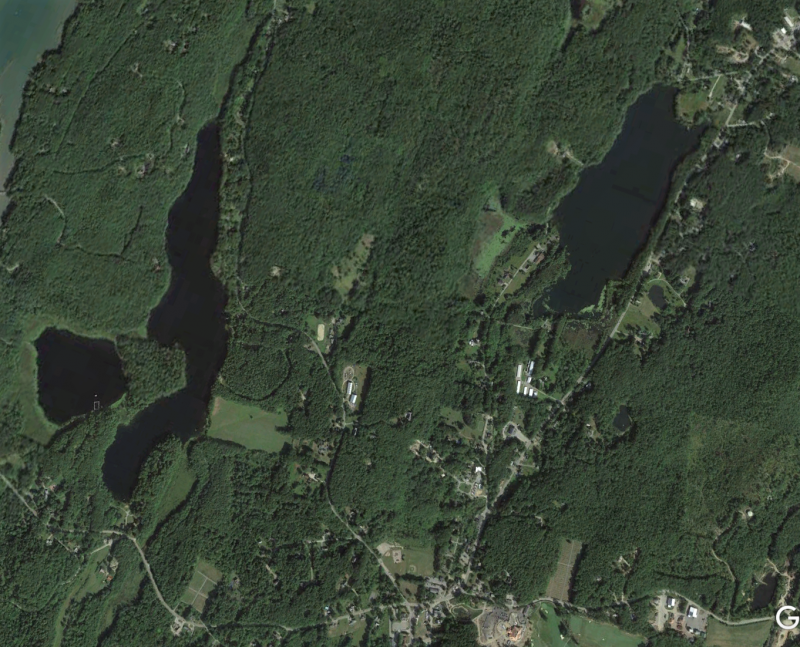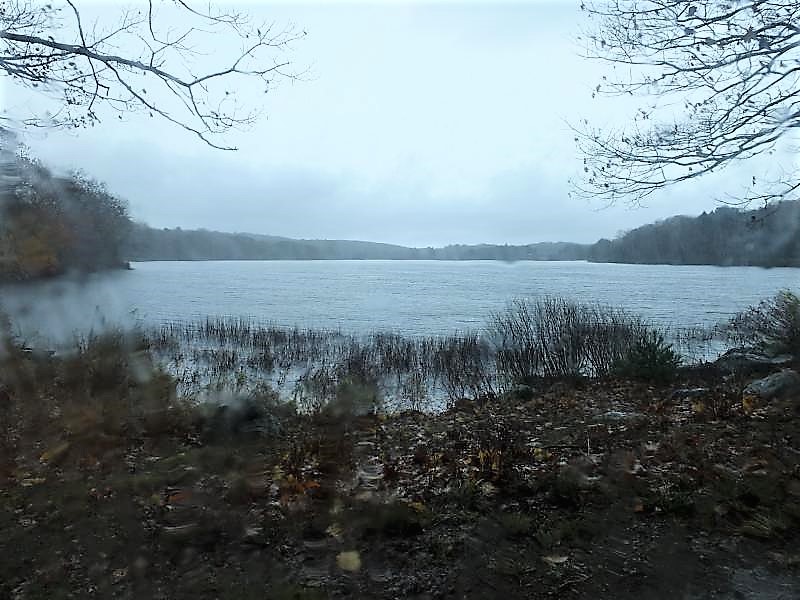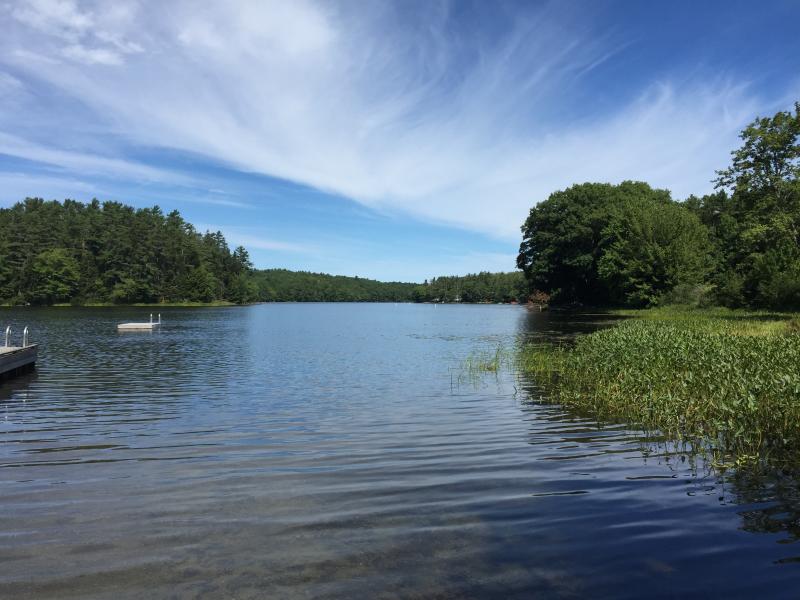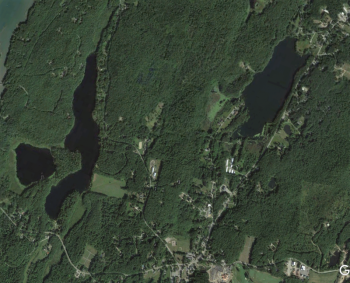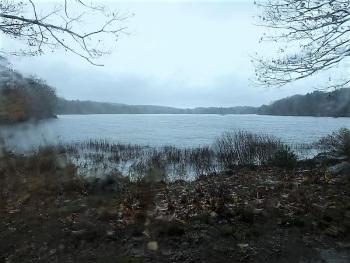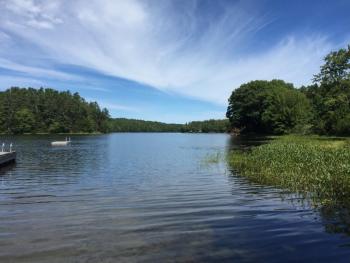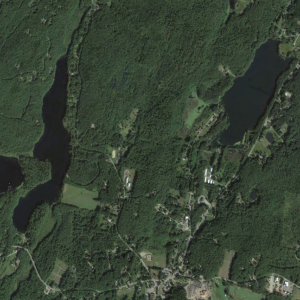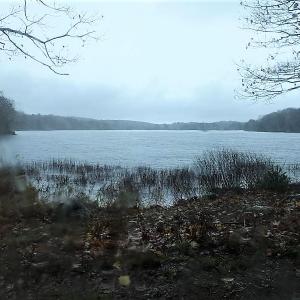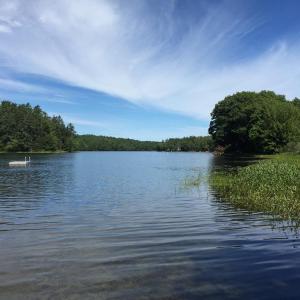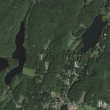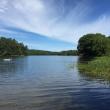Experts advocate conservationism in protecting local water supply
Aquatic biologist Matt Scott has studied Maine’s lakes and ponds for decades. His experience has taught him that man is the top pollutant which puts these water sources at risk.
“We are the enemy. All of our lakes and ponds are at risk due to development,” he said. Scott was one of three presenters July 30 at the Knickerbocker Lake Association’s annual meeting held at the Harbor Theater.
The meeting’s theme was lake protection. Both Knickerbocker Lake and Adams Pond are on Maine’s watch list as at-risk water sources. The KLA started in 1989 as summer and year-round residents became concerned about increased development. In 2006, Knickerbocker Lake became a secondary drinking water source for the region. Boothbay Region Water District became an association corporate member later that year.
BRWD is responsible for clean drinking water. In the late 1880s, a regional water system was formed following an epic fire which burned down a significant portion of downtown Boothbay Harbor. Later, a secondary purpose was introduced. The system began eliminating pathogens which led to water borne diseases such as typhoid. Operations Manager Jon Ziegra explained to association members how BRWD provides clean drinking water to Boothbay, Boothbay Harbor and Southport.
The process includes pumping water out of Knickerbocker Lake and Adams Pond, running it through a filtration system which is ultimately sent to the faucets of local homes, businesses and schools. He introduced three district employees responsible for distributing a high quality drinking water supply. Dale Harmon leads a distribution crew which maintains 104 miles of water main. John Orne is the treatment plant operator who separates pollutants from Adams Pond and Knickerbocker Lake before the water flows to local faucets. And the team’s newest member is Watershed Program Manager Sue Mello. She joined in 2014. She is responsible for lake monitoring, community education and grant writing.
BRWD has a $3.35 million annual budget. “We are a non-profit. We spend everything on the plant operation,” Ziegra said. “We spend a lot of time monitoring the lakes. We hire top consultants and study the watershed to see what threatens it.”
Scott discussed his research studying Maine’s lakes and ponds which includes Adams Pond and Knickerbocker Lake. Maine Society’s LakeSmart program director Maggie Shannon discussed ways communities and residents could better safeguard local water sources from contaminants. All three speakers agreed conservation was the best protection against allowing pollutants, like phosphorus, into local water sources. Phosphorus provides for a massive algae bloom growth. Algae blooms is a blue-green algae which potentially contains toxins. It can cause fish kills, foul up nearby coastlines and produce conditions dangerous to aquatic and human life.
Shannon reported Maine’s lakes and ponds create $4 billion of recreation revenue annually for the state. “Lakes and ponds were pristine for 10,000 years being protected by Mother Nature. We have a big impact on what goes into the lake. A small cut of vegetation makes a huge difference in allowing pollutants to contaminate our water. A lot more comes in a developed watershed than an undeveloped one,” she said.
BRWD recently received approval from the Maine Public Utilities Commission to create a fund to buy conservation land. The district receives donations and buys land around the watershed. The two local water sources are similar, but have a few differences. Adams Pond serves as the region’s main drinking water source producing 184 million gallons per year. Knickerbocker Lake is the secondary source. For 13 years, Knickerbocker has produced 50 million gallons per year and is used in July and August as an alternate source. Knickerbocker Lake is used for recreation. Swimming and small motor boats are allowed. Adams Pond doesn’t allow swimming, but it does allow paddle boats.
Event Date
Address
United States

